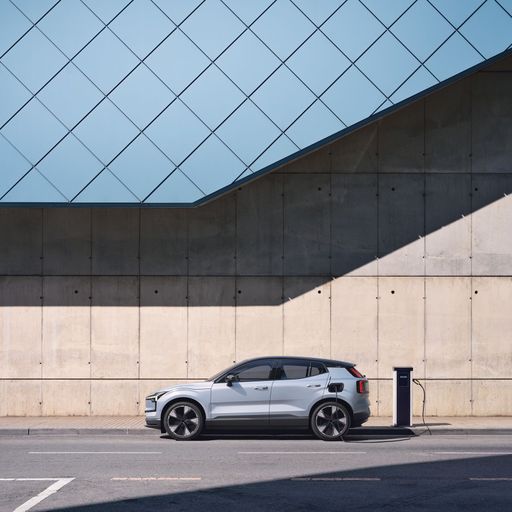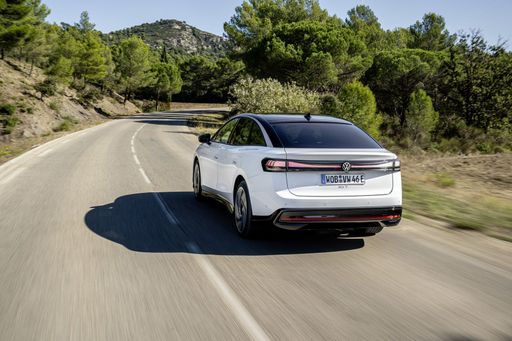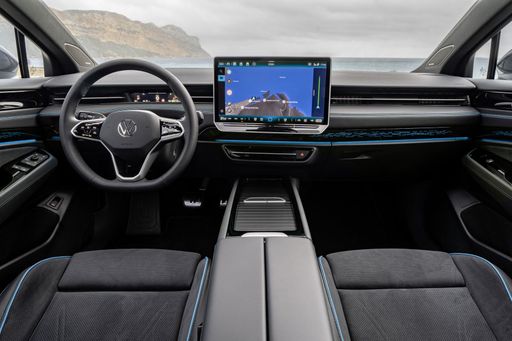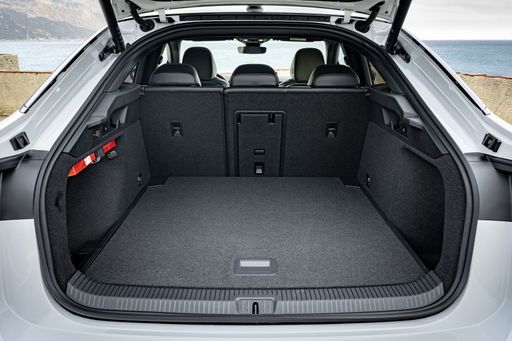Volvo EX30 vs VW ID.7 – Which car suits you better?
Two cars, one duel: Volvo EX30 meets VW ID.7.
Which one wins in performance, efficiency and value for money? Find out now!
Costs and Efficiency:
Looking at overall running costs, both models reveal some interesting differences in everyday economy.
Volvo EX30 has a convincingly advantage in terms of price – it starts at 33000 £, while the VW ID.7 costs 46400 £. That’s a price difference of around 13384 £.
In terms of energy consumption, the advantage goes to the VW ID.7: with 13.60 kWh per 100 km, it’s evident more efficient than the Volvo EX30 with 17 kWh. That’s a difference of about 3.40 kWh.
As for range, the VW ID.7 performs evident better – achieving up to 708 km, about 232 km more than the Volvo EX30.
Engine and Performance:
Power, torque and acceleration are the classic benchmarks for car enthusiasts – and here, some clear differences start to show.
When it comes to engine power, the Volvo EX30 has a clearly perceptible edge – offering 428 HP compared to 340 HP. That’s roughly 88 HP more horsepower.
In acceleration from 0 to 100 km/h, the Volvo EX30 is decisively quicker – completing the sprint in 3.60 s, while the VW ID.7 takes 5.40 s. That’s about 1.80 s faster.
There’s no difference in top speed – both reach 180 km/h.
There’s also a difference in torque: VW ID.7 pulls noticeable stronger with 679 Nm compared to 543 Nm. That’s about 136 Nm difference.
Space and Everyday Use:
Cabin size, boot volume and payload all play a role in everyday practicality. Here, comfort and flexibility make the difference.
Both vehicles offer seating for 5 people.
In curb weight, Volvo EX30 is to a small extent lighter – 1840 kg compared to 2180 kg. The difference is around 340 kg.
In terms of boot space, the VW ID.7 offers convincingly more room – 532 L compared to 318 L. That’s a difference of about 214 L.
In maximum load capacity, the VW ID.7 performs clearly perceptible better – up to 1586 L, which is about 586 L more than the Volvo EX30.
When it comes to payload, VW ID.7 somewhat takes the win – 465 kg compared to 390 kg. That’s a difference of about 75 kg.
Who comes out on top?
Overall, the VW ID.7 shows itself to be performs better in key areas and secures the title of DriveDuel Champion.
It convinces with the more balanced overall package and proves to be the more versatile choice for everyday use.
 @ Volkswagen.de
@ Volkswagen.de
VW ID.7
Volvo EX30
The Volvo EX30 represents a bold step forward for the brand, combining advanced technology with sustainable design principles. Its sleek and compact exterior belies a spacious interior that offers a premium driving experience. With a focus on safety and innovation, this model reflects Volvo's commitment to shaping the future of urban mobility.
details @ Volvo
@ Volvo
 @ Volvo
@ Volvo
 @ Volvo
@ Volvo
 @ Volvo
@ Volvo
 @ Volvo
@ Volvo
VW ID.7
The VW ID.7 represents a significant step forward in Volkswagen's electric vehicle lineup, offering an elegant design combined with advanced technology features. This electric saloon showcases a sleek aerodynamic profile, prioritising both performance and efficiency. Inside, drivers will appreciate the spacious and modern cabin, equipped with intuitive controls and connectivity features for a seamless driving experience.
details @ Volkswagen.de
@ Volkswagen.de
 @ Volkswagen.de
@ Volkswagen.de
 @ Volkswagen.de
@ Volkswagen.de
 @ Volkswagen.de
@ Volkswagen.de
 @ Volvo
@ Volvo
|
 @ Volkswagen.de
@ Volkswagen.de
|
|
|
|
Costs and Consumption |
|
|---|---|
|
Price
33000 - 49100 £
|
Price
46400 - 54200 £
|
|
Consumption L/100km
-
|
Consumption L/100km
-
|
|
Consumption kWh/100km
17 - 18.7 kWh
|
Consumption kWh/100km
13.6 - 16.2 kWh
|
|
Electric Range
339 - 476 km
|
Electric Range
594 - 708 km
|
|
Battery Capacity
49 - 65 kWh
|
Battery Capacity
77 - 86 kWh
|
|
co2
0 g/km
|
co2
0 g/km
|
|
Fuel tank capacity
-
|
Fuel tank capacity
-
|
Dimensions and Body |
|
|---|---|
|
Body Type
SUV
|
Body Type
Hatchback
|
|
Seats
5
|
Seats
5
|
|
Doors
5
|
Doors
5
|
|
Curb weight
1840 - 1960 kg
|
Curb weight
2180 - 2325 kg
|
|
Trunk capacity
318 L
|
Trunk capacity
532 L
|
|
Length
4233 mm
|
Length
4961 mm
|
|
Width
1838 mm
|
Width
1862 mm
|
|
Height
1550 - 1567 mm
|
Height
1535 - 1536 mm
|
|
Max trunk capacity
1000 L
|
Max trunk capacity
1586 L
|
|
Payload
370 - 390 kg
|
Payload
460 - 465 kg
|
Engine and Performance |
|
|---|---|
|
Engine Type
Electric
|
Engine Type
Electric
|
|
Transmission
Automatic
|
Transmission
Automatic
|
|
Transmission Detail
Reduction Gearbox
|
Transmission Detail
Reduction Gearbox
|
|
Drive Type
Rear-Wheel Drive, All-Wheel Drive
|
Drive Type
Rear-Wheel Drive, All-Wheel Drive
|
|
Power HP
272 - 428 HP
|
Power HP
286 - 340 HP
|
|
Acceleration 0-100km/h
3.6 - 5.7 s
|
Acceleration 0-100km/h
5.4 - 6.6 s
|
|
Max Speed
180 km/h
|
Max Speed
180 km/h
|
|
Torque
343 - 543 Nm
|
Torque
545 - 679 Nm
|
|
Number of Cylinders
-
|
Number of Cylinders
-
|
|
Power kW
200 - 315 kW
|
Power kW
210 - 250 kW
|
|
Engine capacity
-
|
Engine capacity
-
|
General |
|
|---|---|
|
Model Year
2024 - 2025
|
Model Year
2023 - 2024
|
|
CO2 Efficiency Class
A
|
CO2 Efficiency Class
A
|
|
Brand
Volvo
|
Brand
VW
|
What drivetrain options does the Volvo EX30 have?
The Volvo EX30 is offered with Rear-Wheel Drive or All-Wheel Drive.
The prices and data displayed are estimates based on German list prices and may vary by country. This information is not legally binding.
